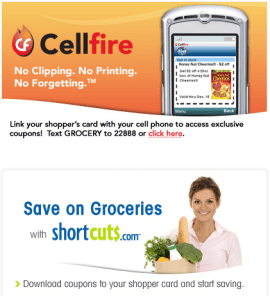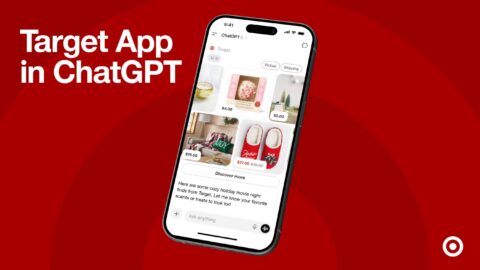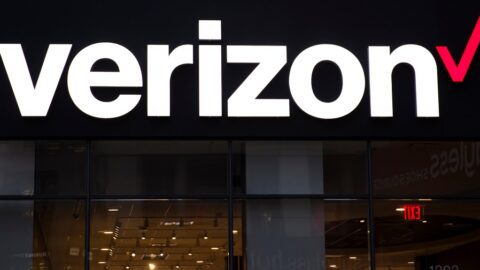Once relegated to housewives in their mid forties with children, the demographic targets for coupons are quickly shifting as new mediums emerge, according to analysts and presenters at this week’s ACP Coupon Conference. “Our data shows the e-coupon user trends a little bit younger and wealthier in line with the demographics of the online adult (versus offline only),” says Lisa Bradner, Analyst with Forrester Research.
New research from Information Resources (IRI) and Platform-A, indicates that 51% of 18-34-year-olds are more likely to use online coupons. While typically ambivalent to traditional coupons, younger couples are the most likely life-stage group to use online coupons, indicating an opportunity to influence product choices within this segment.
With growing and changing demographics comes new ways to deliver coupons, aside from traditional clipping. “The Internet has made coupons ubiquitous, but up until the economic downturn, e-coupons were hampered by the fact that they still needed to be printed out and carried to the store,” says Bradner. “When the economy turns around, we’ll see how much coupon usage drops off. Ultimately, for the FSI to go away, e-coupons will need to become paperless and will need to eliminate breakage.”
“Traditional newspaper coupon campaigns that blanket a region are being replaced by more targeted, cost-efficient online campaigns,” says Fran Garcia, VP Marketing Solutions, Coupons.com. “We’ve seen CPG clients bring 20% of their promotional budgets online to Coupons.com, and they’re getting a 15-20% redemption rate vs. 1% with newspapers. Our customers know they can granularly track the entire life-cycle of a coupon – from viewing and printing through redemption – and get detailed demographic information.”
The mobile phone, which has already created quite a stir as a new shopping medium for consumers, is even being exploited for coupon purposes. While the capability to receive mobile coupons is not brand new, it is starting to come to life at the point of sale. By 2013, over 200 million people will receive and redeem coupons via mobile phones worldwide, according to Juniper Research.
Putting Mobile to Work
Starbucks partnered with Codilink to create a loyalty program based on 2D bar-code coupons deployed via SMS. The campaign is currently running in Guadalajara and San Luis Potosi, Mexico. So far, the effort has reportedly boasted a 60% mobile coupon redemption rate. To spread the word, Starbucks created postcards for distribution in malls, universities and retail outlets. The call-to-action urged consumers to text keyword STARBUCKS to short code 80080 to get a WAP link to download a buy-one-get-one-free 2D bar code mobile coupon. The Starbucks locations are equipped with 2D bar code recognition software, so employees can read the mobile coupon directly from consumers’ mobile phones at the point of sale.
“I really like mobile because, from a consumer perspective, it makes a lot of sense, although there are some kinks to work out of the system,” says Bradner. “Loyalty programs offer companies a way to really engage consumers around the coupons and make sure they’re getting some reward for the discount they’re offering. Creating richer rewards for fewer customers is a reward for the brand and for its loyal shoppers.”
Cellfire, a leading mobile coupon distributor, recently expanded its digital grocery coupon program with Kroger nationwide— making its coupons redeemable at the retailer’s 2,400+ stores across the country. Cellfire is also working with Sears, Payless and Best Buy to deliver coupons via the mobile phone. “Marketers use coupons for different reasons: customer acquisition, increase visit frequency or shopping basket size, or the introduction of new products or categories,” says Dan Kihanya, VP of Consumer Marketing, Cellfire. “Digital media allow them to hit the right segments, thereby increasing ROI. It should be noted that the phone allows for time-of-day targeting as well – a unique aspect of mobile.”
Coupons.com’s Garcia says retailers should optimize their Web sites for smart phones and have a coupon page directly on the site (like Kroger, Safeway, Kmart, CVS and Walgreens have done) where shoppers can print coupons. Garcia notes that while there’s great potential for smart phones, there are still some technical barriers to be worked out. Coupons.com has partnered with Yahoo! Mobile and recently appointed a former Google Android developer as CTO to bring coupons to smart phones in the near future.
Sandy Spakoski, Director of Account Managing, CPG Sales for AOL Shortcuts, says the platform is appealing for younger consumers who want to use coupons without the stigma. Surprisingly, at the time of Shortcuts’ launch in March 2008, 44% of its visitors were males, for leading grocery chains including Kroger.
Spakoski, who presented trends in offline and online couponing at the conference, says one of the appealing aspects of online couponing is security. “Today there is a large counterfeit couponing problem in the grocery space,” she says. “The thing around online coupons—the safety mechanism that they bring—is that you don’t have a data element for a consumer to see or manipulate characters in any way. It makes it a safer product.” Coupons acquired via Shortcuts do not have a barcode, so the consumer doesn’t have a way to edit it. In its one year on the market, Shortcuts has not had any counterfeit issues with coupons. “As manufacturers think about where to take coupons, safety is something they focus on. Counterfeit coupons cost the manufacturer and the retailer,” says Spakoski.
“The evolution we are seeing is similar to what other markets have seen with the transition from physical media to digital,” says Cellfire’s Kihanya. “The industry is embracing the paradigm shift from broadcast distributions through paper channels to targeted programs with digital delivery. This allows marketers and retailers to more tightly align their coupon campaigns with the goals they are trying to achieve.”
Overall Increase in Coupon Usage
Consumers have transformed from “want” to “need” based amid the volatile economic climate. 66% of the population is needs focused, compared to 17.5% two years ago, according to a study conducted by NCH Marketing, a coupon redemption and tracking agent. “Naturally, the majority (59.4%) of coupon users today consider themselves promotion sensitive shoppers,” says Charlie Brown, VP Marketing, NCH.
Because consumers are focused on price and value, the coupon redemption rate has shown a steady increase in the last four years, according to the NCH Consumer Survey. Brown says there has been a 17% increase in coupon redemption in Q4 2008, and it continues to grow. “In a recession, consumers become more responsive and they’re more interested in saving,” says Brown. “The overall numbers of consumers who have used coupons in 2008 in up 5 share points of the populations. Up to 40% of people that say they would use CPG coupons at one time or another, including in that are people who say they very rarely use coupons.” Brown, who also presented at the Coupon Conference, says the Sunday newspaper is still the largest distribution medium (over 90% of coupons are distributed via the newspaper), because it can reach so many people at one time.
“Marketers need to think: not only are consumers using more coupons right now, but it still comes down to the main purpose of trying to move the product,” says Matthew Tilley, VP Marketing, InMar, a marketing agency specializing in promotion processing. “You’re trying to get someone to try your product for the first time, come back to your product for the second time, or continue to be a user of the product. You have to keep that in mind as your objectives. You need to have the right tactics and offers.” Tilley’s Coupon Conference presentation was centered on the increased effectiveness of coupon promotions.
Compelling Content
Like any other form of advertising, the messaging in coupons needs to be relevant and valuable to consumers in order for it to be effective. Brown says consumers look at the expiration date, the purchase requirement and face value. “ If you’re asking them to buy more than they are comfortable buying to get the discount, that will reduce the overall redemption, but it still will motivate some people and can make a good return on investment,” says Brown.
“If you compare the single purchase coupons to a multiple purchase coupon (buy two, three or more), we will generally see the highest redemption rate out of the single purchase because it’s not requiring the consumer to do something that they are uncomfortable with.” Brown notes that these results vary by category. Multiple purchases can work very well for things like cereal, baby food, yogurt, etc.
Some other suggestions experts offer to make integrate coupon promotions with your in-store marketing include:
• Shelf Talkers– could be used to give consumers a reminder to use coupons; provide insight on the savings and value of a discounted product
• Digital floor mat– placed in store aisles, this could give consumers product information at the point of decision
• Point of Sale Integration– eventually, analysts predict that technology will enable cashiers to simply scan a mobile phone to take a discount at the point of sale. Targeted offers and loyalty programs can also be worked at the point of sale.
“Out of store tactics are great at driving traffic to the store and reminding people to pull them in,” says Tilley. “In-store tactics are good for driving consumer interest to one particular brand or subset. You can have all the in-store messaging you want, but if a consumer is not in your store, it won’t matter. It’s not an either or proposition.” He suggests retailers think about coupons as a strategic marketing effort to attract customers in the first place, with compelling offers to keep them coming.













